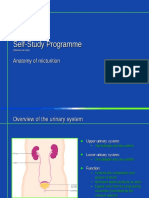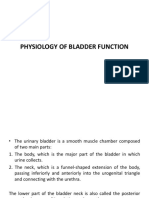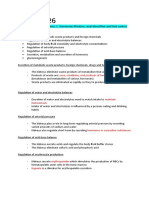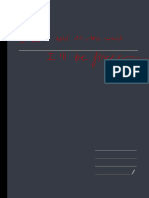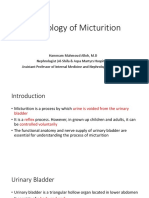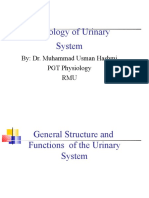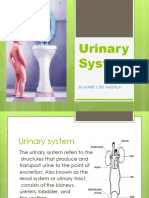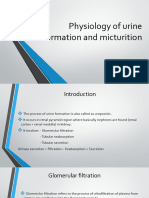0% found this document useful (0 votes)
20 views2 pagesUrinary Bladder Functions Flowcharts
The urinary bladder functions include urine storage, regulated expulsion through the micturition reflex, and prevention of backflow to reduce infection risk. It adapts to varying urine volumes without significant pressure increase, while neural control is managed by the pontine micturition center and the parasympathetic nervous system. Stretch receptors play a crucial role in signaling bladder fullness and coordinating muscle contractions for urination.
Uploaded by
punamofficial02Copyright
© © All Rights Reserved
We take content rights seriously. If you suspect this is your content, claim it here.
Available Formats
Download as DOCX, PDF, TXT or read online on Scribd
0% found this document useful (0 votes)
20 views2 pagesUrinary Bladder Functions Flowcharts
The urinary bladder functions include urine storage, regulated expulsion through the micturition reflex, and prevention of backflow to reduce infection risk. It adapts to varying urine volumes without significant pressure increase, while neural control is managed by the pontine micturition center and the parasympathetic nervous system. Stretch receptors play a crucial role in signaling bladder fullness and coordinating muscle contractions for urination.
Uploaded by
punamofficial02Copyright
© © All Rights Reserved
We take content rights seriously. If you suspect this is your content, claim it here.
Available Formats
Download as DOCX, PDF, TXT or read online on Scribd
/ 2
